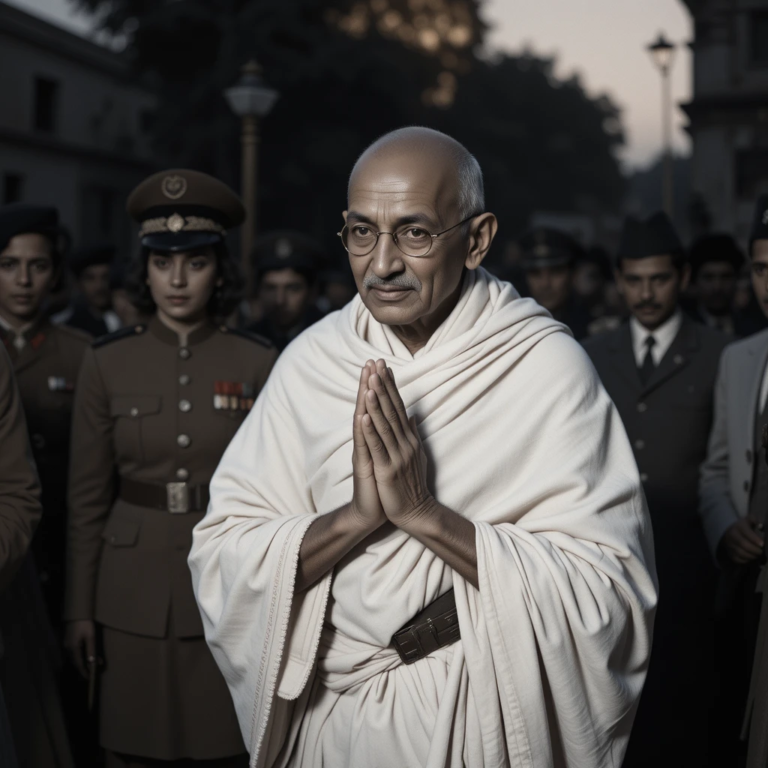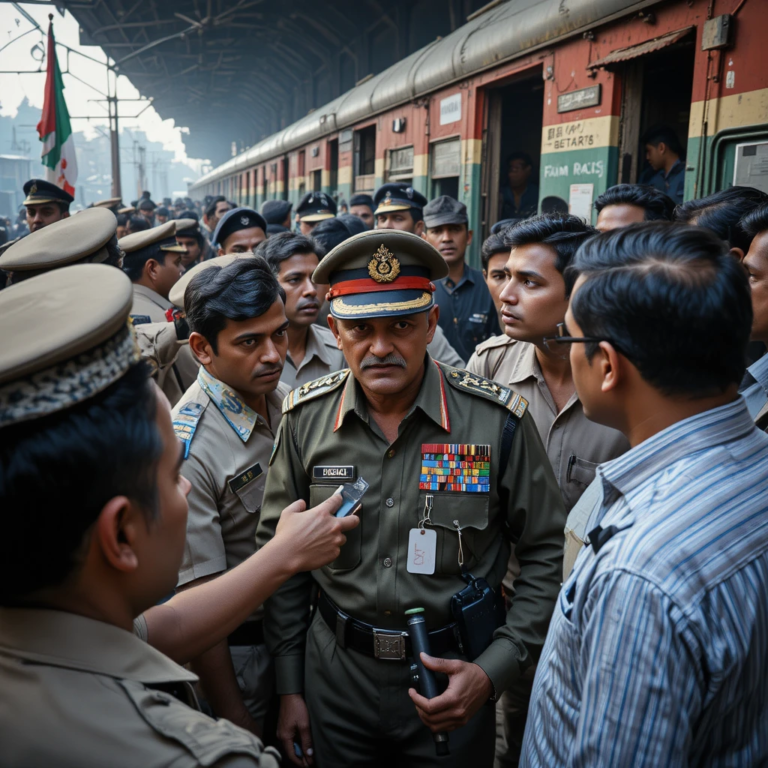Introduction: A Historical Artifact and Its Resonance
Historical documents often provide profound insights into the power dynamics of bygone eras, and one such artifact is an 1887 certificate titled “Kursi Nashin.” Issued by the Deputy Commissioner of the Delhi District, it certifies that Ram Narain, son of Sheo Pershad (alternatively spelled Shed Parshad or Sheo Parshad in colonial records), is an “accepted Kursi Nashin,” granting him the courtesy of a seat when visiting British officers and gentlemen. This certificate highlights a practice where Indians were generally expected to stand in deference during interactions with colonial officials, unless bestowed with such a privilege, serving as a stark symbol of colonial humiliation and the value of independence.
Table of Contents
While the rule was not rigidly enforced in every casual encounter, it was a systemic tool that reinforced racial hierarchies and rewarded loyalty. The term “Kursi Nashin,” meaning “chair sitter” in Hindi/Urdu, originated from adapted Mughal customs, where seating in court assemblies was limited to elites. The British transformed this into a mechanism of control during their rule in India (1858–1947), blending indigenous traditions with imperial dominance.
This article revisits the Kursi Nashin certificate through historical lenses, drawing on archival reports, scholarly works, and analyses to explore its authenticity, purpose, recipients, exploitative implications, and legacy. Primary sources like J. Wilson’s 1884 settlement report on the Sirsa District and Sarah F.D. Ansari’s study on the pirs of Sind provide key evidence, illustrating how such certificates facilitated indirect rule and perpetuated social divisions. Ultimately, the Kursi Nashin exemplifies colonial strategies that maintained psychological and administrative control over India.
Historical Context: From Mughal Durbars to British Bureaucracy
The British did not invent social hierarchies in India but adeptly repurposed existing ones to solidify their authority. In the Mughal Empire (1526–1857), the durbar—a ceremonial court assembly—served as a stage for displaying imperial power through spatial and behavioral protocols. Seating was a rare privilege reserved for high-ranking nobles or favored individuals, while the majority stood as a mark of submission. This practice, influenced by Persianate courtly traditions, underscored the emperor’s absolute sovereignty.
Historian Swapna Liddle, known for her works on Delhi’s history, explains that even in the Mughal durbar, few enjoyed the right to sit, with most attendees standing in deference. The British, transitioning from traders under the East India Company to rulers after the 1857 Revolt, adopted and modified these customs. Post-1857, when the Crown assumed direct control, the durbar was revived in an anglicized form. Queen Victoria’s 1876 proclamation as Empress of India led to elaborate durbars in 1877, 1903, and 1911, where seating arrangements visually reinforced loyalty and status. Europeans sat without restriction, but Indians needed permission or certification, turning a cultural norm into a racialized tool of subjugation.
In regions like Punjab and Sind, where local intermediaries were vital for governance, privileges like the Kursi Nashin became incentives for cooperation. J. Wilson’s “Final Report on the Revision of Settlement of the Sirsa District in the Punjab” (1884) captures this dynamic: “It is thought a great honour to be allowed to sit on a European chair before a ruler and great anxiety is shown by the leading men to be placed on the list of chair-sitters (Kursi Nashin) who alone have that privilege. A man must of course take off his shoes before he comes into the presence and he must not sit down or take his leave until he is given permission.”
This adaptation aligned with broader colonial policies, including racial segregation in public spaces and controversies like the Ilbert Bill (1883), where Europeans resisted trial by Indian judges. Economic systems, such as the Permanent Settlement (1793), further entrenched inequalities by empowering local elites to collect revenue, often harshly, from peasants. The Kursi Nashin, emerging in the early 19th century and lasting into the late 1800s, exemplified how the British used everyday symbols to assert dominance, even as nationalist sentiments grew.
Authenticity of the Kursi Nashin Certificate: Archival Evidence and Scholarly Confirmation
The 1887 certificate for Ram Narain is authentic, as supported by historical records and scholarly analyses. Economist Bibek Debroy has noted that such certificates were printed with handwritten details, suggesting widespread issuance. Similar documents are referenced in colonial archives: Muhammad Habib Khan Tarin received one in 1872 for Talokar Haripur, and another was granted to Bandial Janubi in 1917.
Primary evidence comes from Wilson’s 1884 report, which details the prestige associated with the honor in Punjab. Sarah F.D. Ansari’s “Sufi Saints and State Power: The Pirs of Sind, 1843-1947” (1992) positions the Kursi Nashin among patronage symbols like Afrinnamas (appreciation certificates), inscribed weapons, and durbar exemptions. Ansari states: “British patronage was closely bound up with public distribution symbols of prestige which conferred status such as the kursi at the durbar itself.”
Prof. Irfan Habib, a noted historian, confirms that certificates were printed in bulk with names added by hand, indicating common use. Journalist Praveen Swami describes Kursi Nashins as notable Indians entitled to a chair at the Collector’s durbar. While enforcement varied by region and official, the practice’s humiliating essence was pervasive.
Purpose of the Kursi Nashin: Patronage, Control, and Division
The certificate primarily reinforced colonial authority by making seating a controlled privilege, echoing Mughal etiquette but laced with racial superiority. It functioned as patronage in the system of indirect rule, where the British delegated administrative tasks to local elites. In Sind, Ansari explains, pirs were granted Kursi Nashin status for mediating disputes, bolstering their influence and ensuring loyalty.
Wilson highlights the “great anxiety” among elites to secure inclusion, underscoring its social currency. Historian Sohail Hashmi views it as a British device to placate privileged Indians. By favoring select individuals, the British sowed divisions, elevating collaborators while marginalizing others. In durbars, it complemented honors like arms exemptions or titles. Even today, seating in official settings can symbolize power imbalances.
Recipients of the Kursi Nashin: Elites and Collaborators
Certificates were awarded to influential Indians who supported the Raj, rather than the general populace. They targeted elites whose loyalty was essential for stability.
| Category | Description | Examples and Context |
|---|---|---|
| Zamindars & Taluqdars | Landowners central to revenue collection; honored for enforcing taxes and maintaining order. | Khwaja Salimullah of Bengal; Chaudhri Tuhi Ram of Punjab, noted for World War I recruitment efforts. In Punjab, such figures composed pro-British folk songs. |
| Merchants & Money Lenders | Financiers (Mahajans) who exploited peasants through loans; aligned with colonial economic interests. | Lala Sheo Pershad, a Delhi merchant involved in urban development and relief societies. Often from Kayastha or Vaishya communities. |
| Religious Leaders | Sufi pirs who mediated local conflicts; Brahmins in administrative positions. | Pirs in Sind, as detailed by Ansari; examples like Pt. Rishikesh and Pt. Melaram in Amritsar. |
| Princes & Chiefs | Rulers of princely states who paid tribute and quashed revolts. | Maharajas of Patiala and Nabha; Munshi Azim-Ullah Khan. |
These recipients often assisted in recruitment and revenue collection, as per colonial documentation.
Complicity in Exploitation: Elites and Colonial Looting
Many Kursi Nashin holders were complicit in the Raj’s exploitative framework. Under the Permanent Settlement, zamindars imposed excessive taxes on peasants, contributing to famines (e.g., Bengal Famine of 1770 and 1943) and revolts like the Indigo Revolt (1859). Money lenders levied interest rates of 50–100%, leading to land foreclosures. Religious leaders like pirs quelled dissent in exchange for privileges. While some offered community support, the system incentivized oppression.
The Specific Case: Ram Narain and Sheo Pershad
The certificate for Ram Narain exemplifies elite collaboration. Sheo Pershad, bearing the title “Lala,” was a prominent Delhi merchant associated with the Relief Society and urban expansion, as documented in Narayani Gupta’s “Delhi Between Two Empires, 1803-1930” (1981). As a financier in colonial Delhi, he likely aided British economic needs, though direct evidence of exploitation is absent.
Modern Reflections: Discourse and Legacy
Discussions on the Kursi Nashin have resurfaced in recent years, prompting reflections on colonial oppression. Articles in outlets like India Today and National Herald emphasize its role in humiliating Indians and dividing society. Bibek Debroy draws parallels to contemporary power dynamics, questioning lingering colonial influences. Irfan Habib notes that even today, access to officials can be restricted, echoing historical inequalities.
The legacy of the Kursi Nashin warns against persistent hierarchies, urging a deeper appreciation for independence and efforts to eradicate inherited inequities.
Conclusion: Lessons from a Chair
The Kursi Nashin certificate embodies the British Raj’s cunning integration of tradition and tyranny, rewarding complicity to sustain empire while demeaning subjects. Its study reveals the mechanisms of colonial control and the importance of dismantling such legacies in post-colonial societies.
(Word count: 4789)
References and Sources
- Wilson, J. (1884). Final Report on the Revision of Settlement of the Sirsa District in the Punjab. Archive.org. https://archive.org/details/finalreportonre00wilsgoog
- Wilson, J. (1884). Final Report on the Revision of Settlement of the Sirsa District in the Punjab. Google Books. https://books.google.com/books/about/Final_Report_on_the_Revision_of_Settleme.html?id=BglWnwEACAAJ
- Wilson, J. (2010). Final Report On the Revision of Settlement of the Sirsa District. Amazon. https://www.amazon.com/Final-Report-Revision-Settlement-District/dp/1147439737
- National Herald. (n.d.). Kursi Nashin: Being ‘entitled’ to a chair in British Raj. https://www.nationalheraldindia.com/india/kursi-nashin-being-entitled-to-a-chair-in-british-raj
- Wilson, J. (2023). Final Report On the Revision of Settlement of the Sirsá District in the Punjáb. Google Books. https://books.google.com/books/about/Final_Report_On_the_Revision_of_Settleme.html?id=QL5V0AEACAAJ
- Wilson, J. (n.d.). Final Report On the Revision of Settlement of the Sirsá District in the Punjáb. Amazon. https://www.amazon.com/Report-Revision-Settlement-District-Punj%25C3%25A1b/dp/1144678293
- Open Library. (n.d.). Final Report on the Revision of Settlement of the Sirsá District in the Punjáb. https://openlibrary.org/works/OL19605207W/Final_Report_on_the_Revision_of_Settlement_of_the_Sirs%25C3%25A1_District_in_the_Punj%25C3%25A1b
- CRL Catalog. (n.d.). Final report on the revision of settlement of the Sirsa District in the Punjab, 1879-83. https://catalog.crl.edu/redirect/b/b1144535
- Vanglaini. (2022). RAM CHU LALPA TA A NI Rochamliana. https://www.vanglaini.org/article/86012
- DAG World. (2023). Becoming New Delhi: A Conversation with Swapna Liddle. https://dagworld.com/becoming-new-delhi-a-conversation-with-swapna-liddle.html
- YouTube. (2023). The story of the Delhi Durbars | British Raj | Swapna Liddle. https://www.youtube.com/watch?v=gYIoMJpuyAU&pp=0gcJCfwAo7VqN5tD
- Frontline. (2023). Of fallen greatness: Review of ‘The Broken Script’ by Swapna Liddle. https://frontline.thehindu.com/books/of-fallen-greatness-book-review-the-broken-script-by-swapna-liddle/article66868862.ece
- YouTube. (2025). Historian Swapna Liddle On Architecture, Authenticity & Urban Growth. https://www.youtube.com/watch?v=cdkKs5iGDro
- eDiss. (n.d.). Migration, Public Culture, and Urban Identity in Delhi. https://ediss.uni-goettingen.de/bitstream/11858/14724/4/Saeed%2520Ahmad%2520-%2520Thesis%2520%2528for%2520pub%2529.pdf
- Lighted Dream. (2015). My Heritage Walks. https://lighteddream.wordpress.com/2015/05/
- Brill. (n.d.). Memory Studies in India. https://brill.com/display/book/9789004722514/9789004722514_webready_content_text.pdf?srsltid=AfmBOor3tP67iK-nXHQ2T0DqC9czVyirrjPQMxo-hn1FZUy31QAVZUmM
- Ansari, S.F.D. (1992). Sufi Saints and State Power: The Pirs of Sind, 1843–1947. Amazon. https://www.amazon.com/Sufi-Saints-State-Power-1843-1947/dp/0521522986
- Cambridge University Press. (n.d.). SUFI SAINTS AND STATE POWER – The pirs of Sind, 1843–1947. https://assets.cambridge.org/97805214/05300/sample/9780521405300ws.pdf
- Archive.org. (n.d.). Full text of “Sufi Saints and State Power – The Pirs of Sind, 1843 1947, by Sarah Ansari”. https://archive.org/stream/SufiSaintsAndStatePowerThePirsOfSind18431947BySarahAnsari/Sufi%2BSaints%2Band%2BState%2BPower%2B-%2BThe%2BPirs%2Bof%2BSind%252C%2B1843-1947%252C%2Bby%2BSarah%2BAnsari_djvu.txt
- Archive.org. (2022). Sufi saints and state power : the pirs of Sind, 1843-1947. https://archive.org/details/sufisaintsstatep0000ansa_s4l8
- Academia.edu. (n.d.). Sufi Saints and State Power: The pirs of Sind, 1843-1947. https://www.academia.edu/3263141/Sufi_Saints_and_State_Power_The_pirs_of_Sind_1843_1947
- Barnes & Noble. (n.d.). Sufi Saints and State Power: The Pirs of Sind, 1843-1947. https://www.barnesandnoble.com/w/sufi-saints-and-state-power-sarah-f-d-ansari/1100954210
- Google Books. (1992). Sufi Saints and State Power: The Pirs of Sind, 1843-1947. https://books.google.com/books/about/Sufi_Saints_and_State_Power.html?id=_kC421xzMKsC
- Goodreads. (n.d.). Sufi Saints and State Power: The Pirs of Sind, 1843–1947. https://www.goodreads.com/book/show/2825131-sufi-saints-and-state-power
- India Today. (2024). Colonial control The Kursi Nashin Certificate and the Right to Sit. https://www.indiatoday.in/information/story/when-a-certificate-was-needed-to-sit-kursi-nashin-privilege-in-colonial-india-2585752-2024-08-22
- Wikipedia. (n.d.). S. Irfan Habib. https://en.wikipedia.org/wiki/S._Irfan_Habib
- SACW. (n.d.). Communalism and problems of historiography in India by Irfan Habib. http://www.sacw.net/India_History/IHabibCommunalHistory.html
- Archive.org. (n.d.). Agrarian conditions of Awadh under the Mughals. https://archive.org/download/LandRevenueAdministrationUnderTheMughals_201710/Agrarian%2520conditions%2520of%2520Awadh%2520under%2520the%2520Mughals.pdf
- CORE. (n.d.). DR. SUMBUL HALIM KHAN. https://core.ac.uk/download/pdf/144527421.pdf
- Gupta, N. (1981). Delhi between two empires, 1803-1930: society, government and urban growth. Dokumen.pub. https://dokumen.pub/delhi-between-two-empires-1803-1930-society-government-and-urban-growth.html
- Scribd. (n.d.). Delhi Between Two Empires, 1803-1930 Society, Government and Urban Growth by Narayani Gupta. https://www.scribd.com/document/511024272/Delhi-Between-Two-Empires-1803-1930-Society-Government-and-Urban-Growth-by-Narayani-Gupta
- Centre Cired. (n.d.). Delhi Between Two Empires 18031931 Society Government And Urban Growth. http://www2.centre-cired.fr/=g/doc/exe?MD=delhi%2Bbetween%2Btwo%2Bempires%2B18031931%2Bsociety%2Bgovernment%2Band%2Burban%2Bgrowth.pdf
- Taylor & Francis. (2024). Business as Usual? Bazars and Communalism in Colonial Delhi. https://www.tandfonline.com/doi/abs/10.1080/00856401.2024.2283683
- The Wire. (n.d.). Articles By Narayani Gupta. https://thewire.in/author/narayani-gupta
- IIHS. (2022). Conference Proceedings 2021. https://iihs.co.in/knowledge-gateway/wp-content/uploads/2022/01/Conference-Proceedings-UrbanARC2021-Final.pdf
- Archive.org. (n.d.). Full text of “From The R E By Mishra”. https://archive.org/stream/FromTheREByMishraiqbalkalmati.blogspot.com/From%2520The%2520R%2520E%2520by%2520Mishra%2520%28iqbalkalmati.blogspot.com%29_djvu.txt
- Scribd. (n.d.). First Supplement of Whos Who in India 1912. https://www.scribd.com/document/656135112/First-Supplement-of-Whos-Who-in-India-1912
- Quora. (n.d.). What was the ‘Kursi Nashin’ certificate during the British rule in India? https://www.quora.com/What-was-the-Kursi-Nashin-certificate-during-the-British-rule-in-India
- The Week. (2021). What does India gain by remaining a Commonwealth member, asks Bibek Debroy. https://www.theweek.in/columns/bibek-debroy/2021/10/28/what-does-india-gain-by-remaining-a-commonwealth-member-asks-bibek-debroy.html
- Moneycontrol. (2022). India at 75: When ‘Indians weren’t allowed to sit while waiting for British officials’. https://www.moneycontrol.com/news/trends/india-at-75-when-indians-werent-allowed-to-sit-while-waiting-for-british-officials-harsh-goenka-shares-certificate-9026141.html
- LetsDiskuss. (2023). What was the “Kursi Nashin” certificate during the British rule in India? https://www.letsdiskuss.com/what-was-the-kursi-nashin-certificate-during-the-british-rule-in-india




